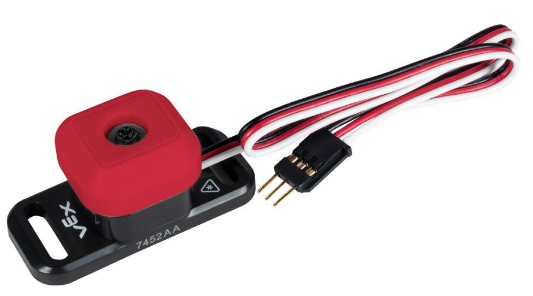

- #What does a vex limit switch do install#
- #What does a vex limit switch do full#
- #What does a vex limit switch do series#
Using the online/debugger window, manually move your robot’s arm up & down to make sure that the sensor data is between (or 0 to 1023 for eas圜 users) at all times.
#What does a vex limit switch do install#
Install it “just enough” at first no need to tighten it completely or put lock nuts on yet. Take your time and think through and visualize each step before you commit to it and screw everything back together. This stiffness increases the likelihood of inserting your square arm shaft in not-quite-the-right orientation of the sensor. Test Test TestĪ warning: Despite what VEX says in their documentation, the shaft does not “slide easily” into the sensor you really have to shove it in. You still run the risk of screwing it on backward (flipped around), but you’ll be several steps closer to the finish line if you’re not doing this blindly. This will save you time and frustration if you do this at the start. At the maximum value, extend that same Sharpie mark from the center and draw a new spoke, marked with “max” or something helpful.Now spin the sensor up to its maximum value as you spin you should see your teeny Sharpie mark on the white part (from step #4) move too.On the red part, write “0” or “min” or something so you know which end gives you low values.Take a Sharpie marker and draw a straight line (spoke) coming out from the shaft to mark this end of the dial be sure the line is on the red part and the inner white part.Turn it again all the way back to the end where your online/debugger window tells you the value is 0 (or whatever its lowest value is may be above 0).

#What does a vex limit switch do full#
Do not install it on the shaft that is spinning more than one full revolution. If your arm is geared-the motor is turning at speed X and through gears makes the arm move at speed Y-be sure to install the potentiometer on the shaft that stays within that 250º arc. That’s why you have to include this sensor at the start of your design process. And maybe you have a tight spot, in which it will never fit. It’s difficult to slap one of these on after the fact doing so usually involves taking the arm joint apart and changing all of your spacers, etc. This sensor, along with the optical shaft encoders (subject of my next post) require some advance planning in your robot design. Then when the arm lifts, its axle turns that inner white portion of the sensor to produce a reading. Wrong! You screw this thing onto a part of your robot that does not move. My brain wanted to screw this thing onto the movement arm itself. The small white inner part of the sensor is square and can rotate (hard to see until you’re holding one) the big red part is screwed onto the robot.

The hole in the middle of the sensor is square, and you run the arm’s shaft through it. Renegade Robotics Starstruck robot potentiometer can be seen in upper right corner, at the top of the forklift arm Why? Because this sensor can only turn about 250º. It is used on a component that has a rather small arc of motion, like a lifting arm. This sensor is not for a chassis or other spinning motor.

This one, however, is not digital but rather analog-returning values from 0 to 4095 (RobotC) or 0 to 1023 (eas圜). Along with the 2 sensors mentioned in my previous post (bump switch and limit switch), this is one of VEX’s most reliable sensors, and it’s pretty durable to boot.
#What does a vex limit switch do series#
The aim of this series is to help teams that are new to using sensors have an idea of what is available and what they might like to use on their own robots.Īnd since this post has gotten kinda lengthy, here’s your Potentiometer Table o’ Contents: (a) installation, (b) mark your sensors before using, (c) test, test, test, (d) OMG I broke it, (e) how does it work? (f) uses. This is the second of a series of posts that examines each VEX sensor in turn.


 0 kommentar(er)
0 kommentar(er)
